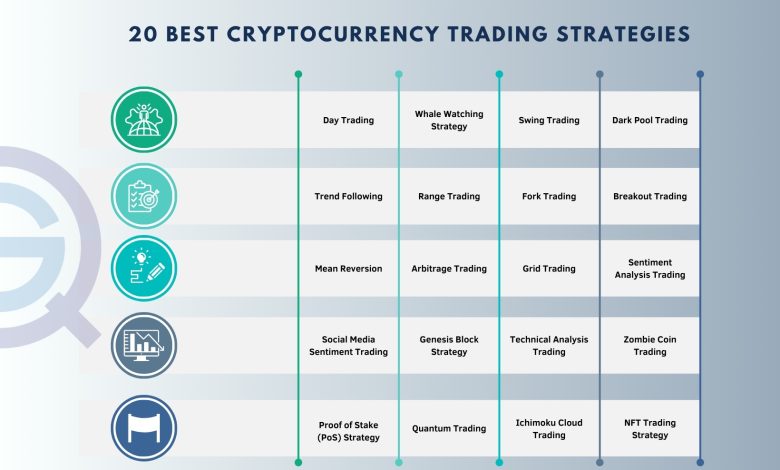Analyzing Technical Indicators in Crypto Trading Strategies

- Understanding the role of technical indicators in crypto trading
- Commonly used technical indicators in cryptocurrency trading
- How to interpret technical indicators for successful trading strategies
- Combining multiple technical indicators for more accurate predictions
- The impact of market volatility on technical indicators in crypto trading
- Backtesting and optimizing trading strategies using technical indicators
Understanding the role of technical indicators in crypto trading
Technical indicators play a crucial role in crypto trading strategies by providing traders with valuable insights into market trends and potential price movements. These indicators are mathematical calculations based on historical price, volume, or open interest data. By analyzing these indicators, traders can make informed decisions about when to buy or sell a particular cryptocurrency.
There are various types of technical indicators that traders can use, such as moving averages, relative strength index (RSI), and Bollinger Bands. Each indicator has its unique way of interpreting market data and identifying potential trading opportunities. Traders often use a combination of different indicators to confirm signals and reduce the risk of false alarms.
It is essential for traders to understand the limitations of technical indicators. While they can provide valuable insights, they are not foolproof and should be used in conjunction with other forms of analysis, such as fundamental analysis and market sentiment. Traders should also be aware of the lagging nature of some indicators, which means they may not always provide timely signals.
Overall, technical indicators are valuable tools for crypto traders to analyze market trends and make informed trading decisions. By understanding how to interpret these indicators correctly and incorporating them into a comprehensive trading strategy, traders can increase their chances of success in the highly volatile cryptocurrency market.
Commonly used technical indicators in cryptocurrency trading
When it comes to analyzing technical indicators in cryptocurrency trading strategies, there are several commonly used tools that traders rely on to make informed decisions. These indicators help traders identify trends, patterns, and potential entry or exit points in the market.
One of the most popular technical indicators is the Moving Average, which helps smooth out price data to identify trends over a specific period. Traders often use the Simple Moving Average (SMA) or the Exponential Moving Average (EMA) to determine the direction of the trend.
Another widely used indicator is the Relative Strength Index (RSI), which measures the speed and change of price movements. The RSI is used to determine whether an asset is overbought or oversold, which can help traders anticipate potential reversals in the market.
Bollinger Bands are also commonly used in cryptocurrency trading to measure volatility and identify potential price breakouts. These bands consist of a simple moving average and two standard deviations, which create a channel that prices typically trade within.
Other popular technical indicators include the MACD (Moving Average Convergence Divergence), the Stochastic Oscillator, and the Fibonacci Retracement levels. Each of these indicators provides valuable insights into market trends and can help traders make more informed decisions when buying or selling cryptocurrencies.
How to interpret technical indicators for successful trading strategies
When it comes to analyzing technical indicators in crypto trading strategies, it is essential to understand how to interpret them correctly for successful outcomes. Technical indicators are tools used by traders to gain insight into the market’s direction based on historical price data. By understanding how to interpret these indicators, traders can make informed decisions and improve their trading strategies.
One key aspect of interpreting technical indicators is to look for patterns and trends in the data. This can help traders identify potential entry and exit points for their trades. For example, if a moving average indicator shows a crossover where the short-term moving average crosses above the long-term moving average, it could signal a bullish trend. Conversely, if the crossover is in the opposite direction, it could indicate a bearish trend.
Another important factor to consider when interpreting technical indicators is to look for confirmation from multiple indicators. By using a combination of different indicators, traders can reduce the risk of false signals and increase the likelihood of making profitable trades. For instance, if both the Relative Strength Index (RSI) and the Moving Average Convergence Divergence (MACD) indicators show overbought conditions, it could be a strong signal to sell.
Additionally, it is crucial to consider the timeframe in which the technical indicators are being analyzed. Different indicators may perform better on certain timeframes, so it is essential to match the indicator with the appropriate timeframe for accurate analysis. For example, short-term traders may prefer using indicators like the Stochastic Oscillator for intraday trading, while long-term investors may rely on indicators like the Ichimoku Cloud for trend analysis.
In conclusion, interpreting technical indicators is a vital skill for successful trading strategies in the crypto market. By understanding how to analyze these indicators, traders can make more informed decisions, reduce risks, and increase their chances of profitability. It is essential to look for patterns, seek confirmation from multiple indicators, and consider the timeframe to make the most of technical analysis in crypto trading.
Combining multiple technical indicators for more accurate predictions
When it comes to analyzing technical indicators in crypto trading strategies, combining multiple indicators can lead to more accurate predictions. By using a variety of indicators, traders can gain a more comprehensive understanding of market trends and potential price movements.
One approach to combining technical indicators is to look for confirmation between different indicators. For example, if both the Moving Average Convergence Divergence (MACD) and Relative Strength Index (RSI) are showing bullish signals, this can provide stronger evidence for a potential uptrend.
Another strategy is to use complementary indicators that provide different types of information. For instance, combining trend-following indicators like the Moving Average with momentum indicators like the Stochastic Oscillator can help traders identify both the direction and strength of a trend.
It’s important to note that while combining multiple technical indicators can enhance the accuracy of predictions, it’s also crucial to avoid overcomplicating the analysis. Traders should focus on using a manageable number of indicators that complement each other and provide clear signals.
The impact of market volatility on technical indicators in crypto trading
Market volatility can have a significant impact on technical indicators used in crypto trading strategies. When the market experiences high levels of volatility, technical indicators may become less reliable as they are based on historical price data. This can lead to false signals and inaccurate predictions, making it challenging for traders to make informed decisions.
One of the key technical indicators affected by market volatility is the moving average. Moving averages are used to smooth out price data and identify trends. However, during periods of high volatility, moving averages may lag behind the actual price movement, resulting in delayed signals. Traders need to be aware of this potential lag and adjust their trading strategies accordingly.
Another technical indicator impacted by market volatility is the Relative Strength Index (RSI). The RSI is used to measure the speed and change of price movements. In volatile markets, the RSI can give false signals due to sharp price fluctuations. Traders should be cautious when relying on the RSI during periods of high volatility and consider using other indicators to confirm signals.
Overall, it is essential for traders to understand how market volatility can affect technical indicators in crypto trading. By being aware of the limitations of these indicators during volatile periods, traders can make more informed decisions and adapt their strategies to changing market conditions.
Backtesting and optimizing trading strategies using technical indicators
When it comes to analyzing technical indicators in crypto trading strategies, backtesting and optimizing are crucial steps in ensuring the effectiveness of your approach. Backtesting involves testing a strategy using historical data to see how it would have performed in the past. This allows traders to evaluate the viability of their strategies before risking real capital. Optimizing, on the other hand, involves fine-tuning the parameters of a strategy to maximize its potential returns.
One common approach to backtesting and optimizing trading strategies is to use technical indicators. These indicators are mathematical calculations based on historical price, volume, or open interest data. They can help traders identify trends, momentum, volatility, and other key factors that can influence the direction of an asset’s price.
By backtesting a trading strategy using technical indicators, traders can gain valuable insights into how well the strategy would have performed in different market conditions. This can help them identify strengths and weaknesses in their approach and make necessary adjustments to improve its overall performance. Additionally, optimizing a strategy based on technical indicators can help traders maximize their profits and minimize their risks.



